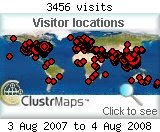
Introduction
Service begins where the road ends... with that altruistic slogan the municipal health office of the frontier town of Paracelis located in eastern Mountain Province has been delivering health services to the remotest hinterland villages of its health district for the past 3 years through a local health initiative called Community Health Outreach Program Paracelis (CHOPP). Through ‘roadless rivers’ (the cobbled riverbeds as the road itself), ‘slippery-when-wet roads’ ( muddy ruts), riverine highways (silk-smooth banca ride during rainy season only) and rough and rugged roads (bumpy and dusty dirt roads in summer), CHOPP endeavors to deliver enhanced basic health services at the doorsteps of the villages, literally. Pro-actively reaching-out to isolated and marginalized villagers instead of just passively waiting for them to come to health centers (when they are already very sick and dying anyway), CHOPP delivers a responsive if not comprehensive essential outreach package focusing mainly on prevention and early disease detection (health screening) and not merely on the curative aspect. An innovative approach to health at the grass-root level and at the same time a template for integrating the implementation of both regular (local and national) and special (FAPs) health programs , CHOPP hopes to contribute to improving the health of the people and be a health system model to other like-situated underprivileged communities.
What is the program?
Conceptual background
After a visit to Saku Central Hospital in Nagano, Japan in November 2002, the MHO, Dr. Marcos Ayangwa started conceptualizing a framework integrating the Mass Health Screening (MHS) concept which that hospital has been pioneering since 1950s. The MHS has been very successful in Japan and is being piloted at the time in Taba-ao, Kapangan, Benguet as a component under a joint CDA-JICA project. It took another visit, this time a study tour in Taba-ao on 2003, that culminated in the birth of CHOPP.
Moreover, issues like accessibility, affordability and availability of a responsive healthcare have never been more glaring in as geographically-isolated and marginalized community as Paracelis. An agricultural land (4th class income classification) with vast emptiness far and between barangays, crisscrossed with hills and peaks and rivers, Paracelis indeed needed a peculiarly- responsive service package to address the ill-health of its people. Against the backdrop of the HSRA movement (now Fourmula one for Health or F1 of the DOH), an innovative cross-cutting package suited to the local conditions needs to be developed right down at the sitio level.
Framework: Unified, dynamic, responsive and sustainable health services
In consonance with the F1 goals of better health outcomes, more responsive health system and more equitable healthcare financing which are themselves in consonance with health systems goals of WHO, Millenium Development Goals and the Medium-Term Development Plan, the CHOPP works by unifying the delivery of services in one dynamically-interlinked system at the grassroot level as against multi-layered and compartmentalized if not component-specific coverage of some nationwide-based programs. This is not a ‘re-inventing the wheel’ approach but rather innovating to make the system more responsive and sustainable.
The 3 strategic components of CHOPP are: participatory, integrative and enhanced outreach focused on disease prevention and health promotion; partnership village dispensaries or Coop Botika providing low-cost essential quality medicines; and local socialized health financing schemes or Peso for Health (P4H). The latter is envisioned as complementing the NHIP of PhilHealth towards universal health insurance and supplementing its out-patient benefit package (OPB). Its objective is to provide a financial instrument for a cash-less access and utilization of outpatient and outreach services. Recently, a special P4H (for schools) was adopted covering all of schoolers in Paracelis and eastern Natonin. With more than 50% of schools enrolled so far, pupils/students are now enjoying the benefits like Atraumatic Restorative Treatment (ART) of dental caries, which incidentally is the leading cause of morbidity in schools. Coupled with readily available medicines in major sitios of the municipality through the Coop botika and/or Botika ng Barangay, each P4H member is assured of responsive service, when and where needed. To illustrate further, during outreach and regular consultations P4H members utilize the medical, dental, laboratory services and subsequently get their medicines from the village Botika without the need of ‘out-of-pocket’ payment, chargeable to P4H fund. This impacted ultimately on improving their health-seeking behaviour to not come for check-up only when sick but even when feeling un-ill. Thus, in 2006, a good 11% of those who sought consult in outreach presented no complaint at all. On the other hand, the partner cooperative-managed botika, while enrolling all of its members to the P4H, actually benefited from the financial security of the same (through reimbursement of cost of medicines taken by P4H members) and in part therefore sustained by the fund itself. A case in point for example, is that one of the cooperative partners’ pharmacy actually received 70% of the total amount disbursed from P4H for reimbursements. It is now a millionaire pharmacy. Overall, this interdependence creates a mutually-beneficial symbiosis among CHOPP’s components. Above and beyond sensible economics, it has a tremendous impact on really improving health as a whole.
In short, each of these components is not mutually exclusive from the other but are rather closely interlinked or interdependent of the other. Separately, each may contribute as much to the goal but collectively, together, each component actually potentiate each other. The whole is indeed greater than the sum of its parts.
Managed locally by the expanded LHB of Paracelis (to include representatives each from LGU-Natonin, Dep-Ed Paracelis and ABC Paracelis) that meets quarterly, through the Office on Health Services (MHO) for now, CHOPP’s operations can be modified or customized depending on the need at any one time. This helps ensure sustainability of the program.
Impact of CHOPP vis-à-vis UNFPA’s RH and Global Fund’s Malaria program
CHOPP likewise offers a perfect venue for advocacy and IECs as a template or framework for integrating special projects ie UNFPA’s 6th CP and Global Fund’s Malaria program. Using the UNFPA’s IEC van, for instance, appropriate films and powerpoints were shown on topics ranging from VAWC, 5th CP best practices, RH and PDS, Malaria, Dengue, PTB, sanitation and a host of other regular health programs. As it is in far-flung sitios , this was not only entertaining but a very effective medium to bring across seldom-heard-often-trivialized health messages. Many came just to watch but most left learning about eye-opening novel topics like VAWC, which often times a topic better relegated as taboo.
Moreover, towards achieving UNFPA’s output level indicator of social health insurance of poor households, CHOPP in a way through its P4H component is contributing greatly to that end. In fact, as of December, 2006, a good 36.5% (7,072) of total population (NSO = 24, 817) were enrolled since the start of the program. Among the active members (3,136-regular and special P4H) and in just 7 months, 60% (1,894) were students/pupils district-wide, with a prospect of enrolling them all once the new school year starts in June. It is noteworthy from these figures that such could have been brought about only through solid partnership and community participation fostered among the stakeholders and implementers alike_ Dep-Ed Paracelis and the strong support of its PTCAs, and the LGUs of Natonin and Paracelis particularly its municipal and barangay officials.
Recently, the Sangguniang Bayan of Paracelis passed the Reproductive Health (RH) Code or ordinance of the municipality, by and large through the assistance of PLCPD. This code affirms the commitment of Paracelis to better improve the reproductive health status of its people especially the vulnerable women, children and the poor, hopefully within the duration of the UNFPA 6th CP till 2009. More importantly though, even beyond that time span is the hope that out of this code, Paracelis can sustain on its own activities and programs geared to really improving its RH status. Like CHOPP’s.
With continuing strong political support at the LGU and external assistance like UNFPA’s, a very RH-program like CHOPP is sustainable. A unique health system model especially designed for ‘end of the road’ communities, CHOPP slowly and steadily evolves to bring to fruition that elusive dream of ‘Health for ALL’.
Written by:
Dr. Marcos Ayangwa, MHO
Paracelis, Mt. Province
Paracelis, Mt. Province













0 comments:
Post a Comment